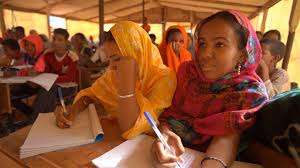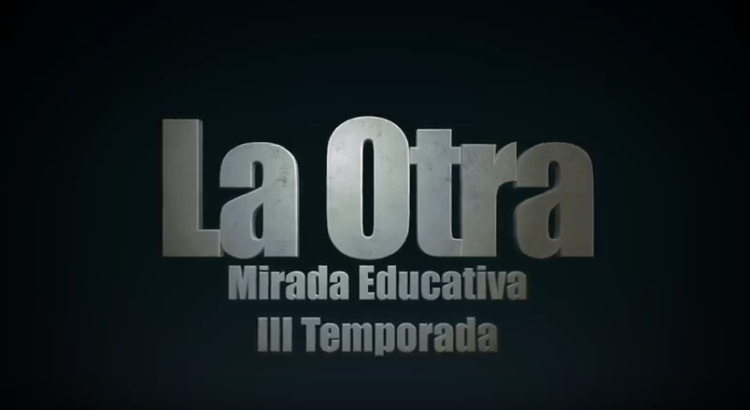Por: Educación 3.0 28-12.2018
Los mapas mentales y conceptuales son un recurso muy valioso para el aula, pues con ellos es posible representar gráficamente cualquier idea. Las siguientes aplicaciones y plataformas han sido creadas para esta tarea.
Las siguientes apps y webs facilitan la tarea de organizar los conceptos y relacionarlos, resultando más fácil para los docentes elaborar esquemas y mapas conceptuales que estructuren los contenidos a impartir en el aula; además de permitir a los estudiantes utilizar esos conocimientos para dar forma a otros relacionados.
Incluye la sincronización con herramientas de uso diario, además de la integración con más de 800 aplicaciones y la posibilidad de compartir mapas conceptuales y crear alineaciones. También cuenta con una vista cronológica, filtros, navegación simplificada y modo instructivo.
Un programa descargable para realizar mapas conceptuales y diagramas, por lo que resulta muy útil para aquellas personas que deseen incorporarlo a sus clases, trabajos o presentaciones académicas. Permite a los usuarios insertar comentarios en sus propios trabajos y en los de otros; imprimirlos en múltiples páginas; y exportarlos en los formatos de Microsoft Office y PDF
Permite escribir tanto con el teclado como con el dedo y para evitar toques indeseados, detecta la palma de la mano. Además, proporciona varios pinceles diferentes, colores y una opción para exportar mapas conceptuales en formato PDF. Existe una versión específica para dispositivos Samsung que añade compatibilidad con su stylus S-Pen.
Apuesta por la personalización, gracias a la posibilidad de cambiar los fondos de los mapas conceptuales, los colores utilizados, los patrones e incluso el formato del texto. Como complemento, cuenta con distintos temas sobre los que trabajar, así como varias opciones de mapas conceptuales en los que introducir notas, enlaces e imágenes.
Desde esta app se pueden importar y exportar muchos de los formatos de las aplicaciones de escritorio para crear mapas conceptuales, incluyendo Novamind, Xmind, OPML, Excel, texto sin formato… El proyecto resultante puede exportarse también a PowerPoint o Keynote, Word o Pages, PDF, PNG… Funciona con servicios como Dropbox y WebDAV, así como con redes sociales y otras aplicaciones.
Permite trabajar de forma colaborativa a través de diversos iPad, iPhone o vía web, sincronizando en tiempo real todos los cambios que se realicen en el proyecto. La app incluye almacenamiento gratuito en la nube de los mapas conceptuales creados, que también pueden descargarse con un solo clic.
Tiene dos versiones: una gratuita y con funciones limitadas, y otra mucho más completa que permite crear documentos ilimitados, añadir hipervínculos… Su interfaz es muy intuitiva y es posible añadir notas, enlaces, imágenes, información adicional en cada uno de los cuadros de los mapas conceptuales… También existe versión para Windows
Es una herramienta para crear esquemas y mapas conceptuales que permite añadir a los textos gráficos, dibujos, presentaciones, documentos… Luego, sincroniza todos esos contenidos entre los diferentes dispositivos que la tengan instalada, para lo que es necesario registrarse de forma gratuita. Su descarga también es gratis, tanto en dispositivos iOS como Android
Gratuita y muy fácil de utilizar, brinda la opción de arrastrar, reordenar y editar los asuntos directamente en la propia página del mapa conceptual. La versión de pago, que puede adquirirse desde la propia aplicación, ofrece un editor mejorado con enlaces cruzados, colores personalizados, imágenes, enlaces a otros mapas mentales… Los documentos pueden subirse a la nube, para acceder a ellos desde distintos dispositivos a través del servicio de Dropbox
Ofrece un espacio ilimitado para los mapas conceptuales, que se organizan de forma manual arrastrando y soltando nodos, persoalizando tanto la forma como el fondo y el estilo. Es gratuita y disponible para dispositivos Android
Para utilizar esta app hay que registrarse, aunque su uso es gratuito (eso sí, la versión Premium dispone de funcionalidades adicionales). El usuario puede exportar o compartir los mapas conceptuales, que son protegidos contra las amenazas offline
Posee la particularidad de dibujar diagramas deslizando el dedo por la superficie de la pantalla, eligiendo colores y formas para cada uno de los mapas conceptuales.
Para dibujar diagramas, mapas conceptuales… y convertirlos en esquemas o viceversa. El texto puede copiarse desde otras aplicaciones, desde un correo electrónico o un documento, y luego guardarse como fotografía, subirse a la nube o a Facebook. La descarga es gratuita, pero para realizar mapas conceptuales ilimitados es necesario comprar una actualización dentro de la app.
Para tomar notas, crear listas y recopilar información. Se puede utilizar junto con la versión para PC y sus funciones de escritorio incluyen notas, categorías, recursos y fotografías, entre otros.
Una herramienta para organizar ideas, recursos o imágenes en forma de gráficos, muros virtuales, mapas conceptuales, líneas de tiempo… Pueden utilizarla varios usuarios, por lo que es una interesante opción de trabajo colaborativo. Cuesta 5,49 euros
Tiene dos versiones: una en forma de app y otra online. Destaca por las numerosas plantillas que incorpora, más de 50 diagramas, así como por sus posibilidades colaborativas y su biblioteca de ejemplos.
Su uso es muy sencillo va guiando paso a paso: desde elegir la forma de los cuadros hasta las líneas conectoras con sólo arrastrarlas del lateral a la página principal para así crear los mapas conceptuales. Luego, pueden personalizarse en función del color, tipo de fuente…
Especialmente pensada para el aprendizaje de nueva información, permite que los profesores utilicen las cartas de KWHL para determinar lo que sabían sus estudiantes antes de la introducción del nuevo material y la comparan a lo que aprendieron.
Bubbl es un servicio para crear mapas conceptuales y mentales a través de cualquier navegador, de forma gratuita y muy sencilla. Es perfecto tanto para docentes que quieran enviar contenido a sus alumnos, como para que estos elaboren y desarrollen sus propios esquemas de mapas conceptuales como técnica de estudio.
Software de gestión gratuito para crear mapas conceptuales compatible con Windows, macOS y Linux. Dispone de un motor de addons para añadir nuevas características a la hora de crear y personalizar los mapas conceptuales
Se trata de un servicio web multidisciplinar con una interfaz parecida a Google Drive. Es multidisciplinar y la posibilidad de crear mapas conceptuales es una de las muchas funciones que permite; tan fácil como arrastrar y soltar elementos. Permite exportar los resultados de varios modos, como guardándolos en varios servicios en la nube o enviándolos a través de correo
Entre las características de GoConqr se encuentra la posibilidad de crear mapas conceptuales para “facilitar la conexión de ideas y mejorar el aprendizaje”. Para estudiantes de Secundaria y Bachillerato que quieran aprovecharla como complemento a sus apuntes
Ideado para satisfacer las necesidades de empresas que necesitan crear mapas conceptuales en equipo, Mindmanager es un completo gestor y creador de estos recursos a través de editores, disponible para Windows y Mac, con sincronización en la nube, gestión de proyectos y mucho más.
Con Coggle es posible crear todo tipo de mapas conceptuales, esquemas interactivos e incluso cualquier nota con dibujos y diagramas. Muchas posibilidades para una plataforma gratuita con opciones de pago que permiten ampliar las posibilidades añadiendo nuevas funcionalidades. Es posible compartir contenidos
Simple Mapper
Para organizar ideas a través de mapas conceptuales, diagramas de red e interacción o flujos de trabajo; todo a través de un navegador web. Con Simple Mapper todas las creaciones son públicas, de forma que se comparten con lo alumnos fácilmente. Requiere Adobe Flash.
El caso de Text 2 Mind Map es bastante curioso y también diferente al de otras opciones contempladas en esta lista. Permite escribir los elementos del diagrama en una caja de texto y la plataforma automáticamente la convierte a un mapa conceptual.
Tanto de forma individual como a nivel colectivo, esta plataforma permite la creación de mapas conceptuales partiendo de un nodo principal al que se pueden agregar otros secundarios y información de interés en distintos formatos. Se puede personalizar el diseño cambiando, por ejemplo, el color de las fuentes y añadir hipervínculos e iconos
Desde una burbuja inicial, situada en el centro del mapa conceptual, esta solución online permite extraer ramificaciones totalmente personalizables (en cuanto a tamaño, color de fondo y tipografía) a las que se sumar imágenes e hipervínculos.Cada creación puede desplazarse por el mapa conceptual cuando el usuario, o alguno de los miembros del grupo de trabajo, lo consideren preciso.
Esta plataforma facilita la creación de mapas conceptuales a través de la vinculación de hexágonos en los que se incluyen las las ideas. Incorpora la opción de cambiarles el color para identificar los distintos niveles. Una vez se termine, es posible exportar el resultado, compartirlo, guardarlo en formato de texto o implementarlo en otra plataforma.
Gracias a su acceso multiplataforma, esta app hace posible la creación y edición de mapas conceptuales desde cualquier lugar y momento. Permite incluir imágenes, documentos de texto y páginas web a cada pensamiento , además de contar con un buscador. Para Android e iOS.
Esta página web permite la creación de mapas conceptuales programados en Java. Para su diseño, incluye una amplia gama de herramientas de formato y color. También es posible añadir hipervínculos e importar documentos e, incluso, otros mapas. A la hora de exportar los mapas conceptuales, da la opción de hacerlo en varios formatos (.html, .pdf o .jpg). Para cualquier sistema operativo.
Un sitio web que permite a los usuarios crear de forma sencilla mapas conceptuales sobre cualquier tema. Para usarlo, el usuario debe conceptualizar el tema que quiera ilustrar con los mapas mentales. Añadirá las categorías y subcategorías del tema y se van poniendo los puntos de ramificación. Cuenta con la opción de anotar cosas en cualquier punto de ramificación.
Para elaborar mapas conceptuales y diagramas. Este programa se puede utilizar para realizar planificaciones, conceptos generales y específicos sobre un determinado tema. En un simple mapa conceptual, se pueden destacar los puntos más relevantes
https://www.educaciontrespuntocero.com/recursos/apps-para-crear-mapas-conceptuales/19624.html




 Los
Los 








 Users Today : 16
Users Today : 16 Total Users : 35460369
Total Users : 35460369 Views Today : 23
Views Today : 23 Total views : 3419123
Total views : 3419123